Earlier this Summer, in late July, a part of the Paik Replayed research team—Patrick Keller, Lívia Nolasco-Rózsás, and Erika Marthins—gathered online for a focused workshop week to launch Work Package 2 (WP2).
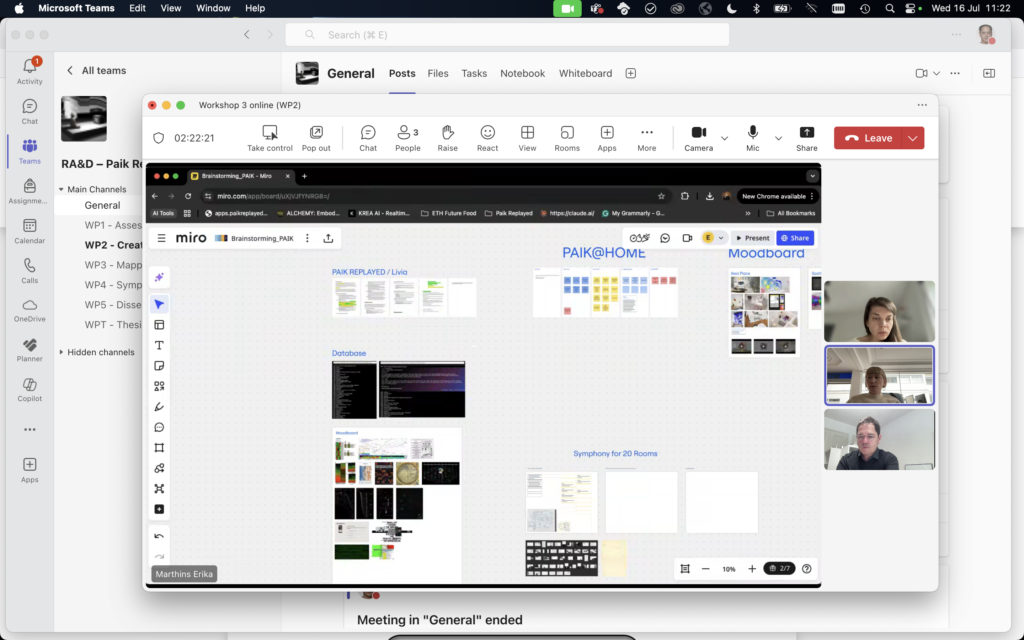
The goal of WP2 is to prototype and test possible models for the transposition and digitization of artworks (non digital-born) across formats and media—asking what forms of interpretation and exhibition are possible today, particularly in hybrid or digital exhibitions settings.
This phase builds on the groundwork laid in WP1, where typologies and practices of hybrid exhibitions were surveyed and mapped, and now turns toward prototyping. It will then feed back into WP1 with new knowledge acquired during this practice-based phase dedicated to the creation and curation of a hybrid exhibition.
This week was therefore also an opportunity to review the progress of WP1, the academic publications made, the development of a database listing past and recent digital and/or hybrid exhibitions, the process of mapping some of them (showing the network of an exhibition between curation, artworks, and reception), and their categorization, towards a form of taxonomy of digital–online exhibitions (starting in 1993).
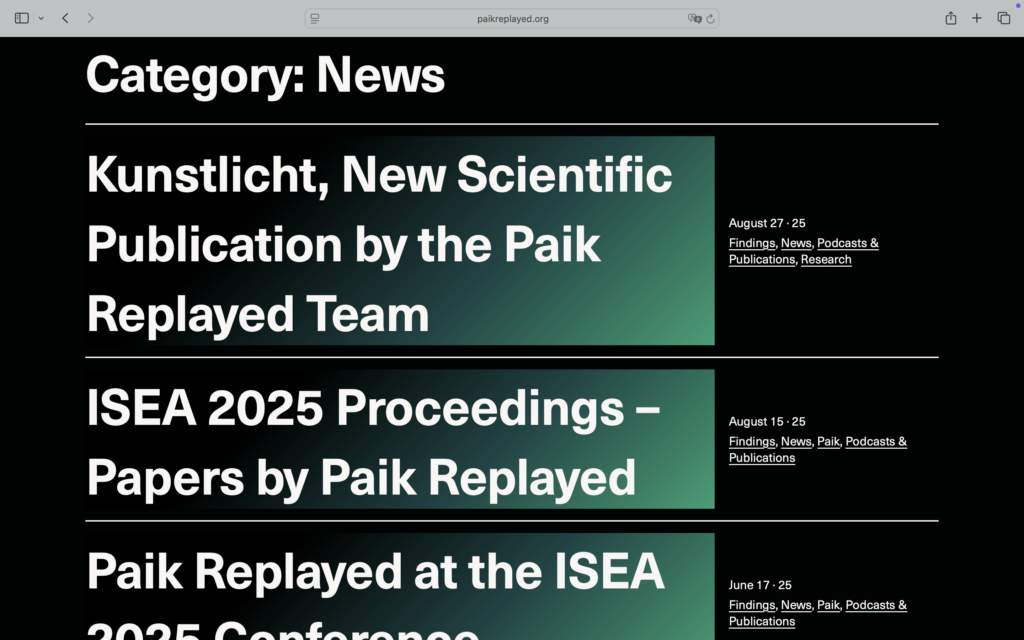
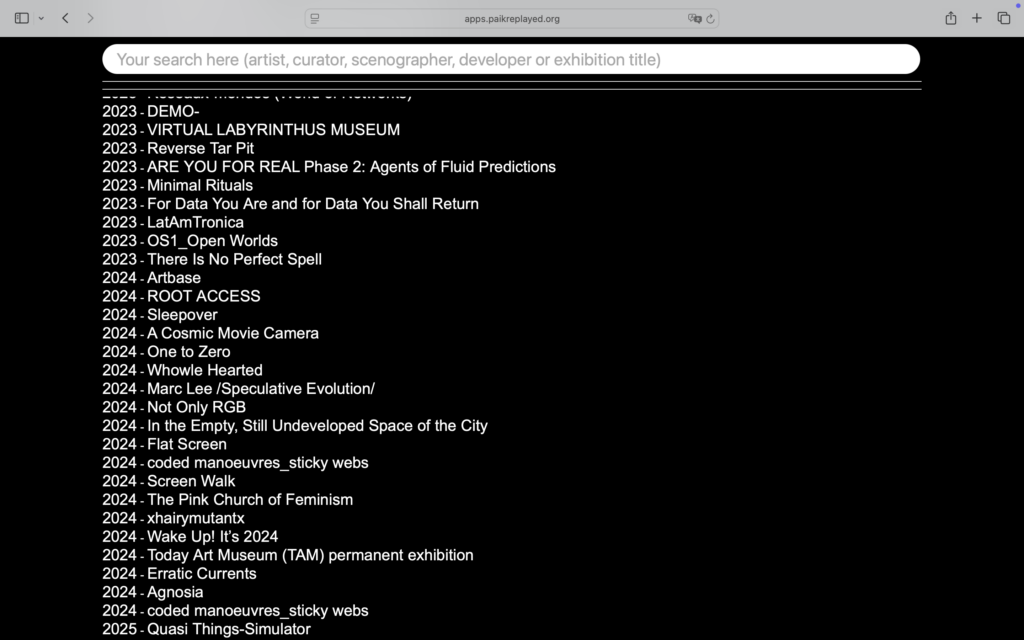
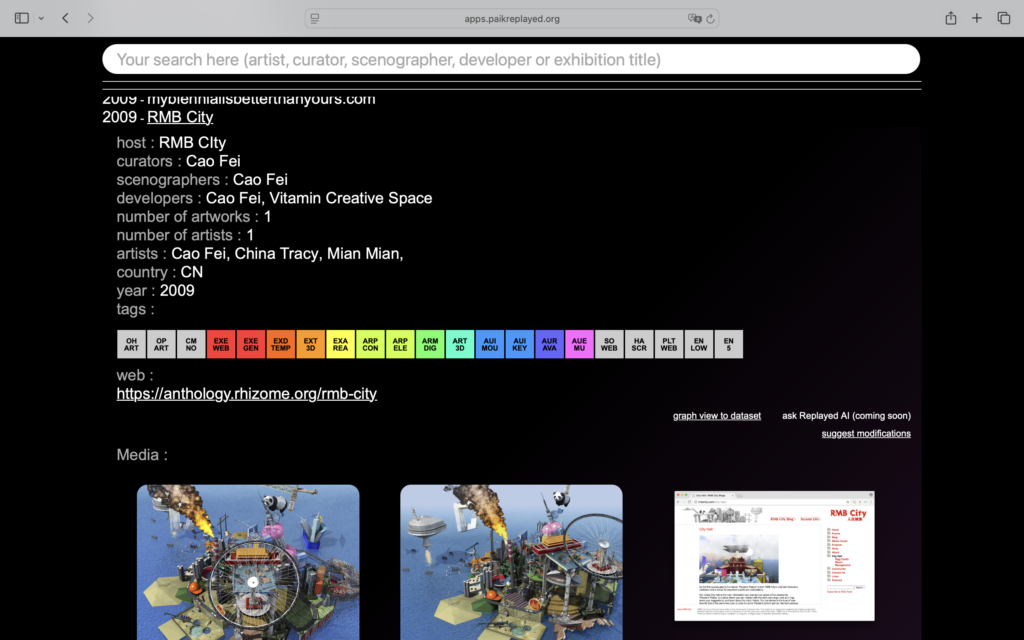
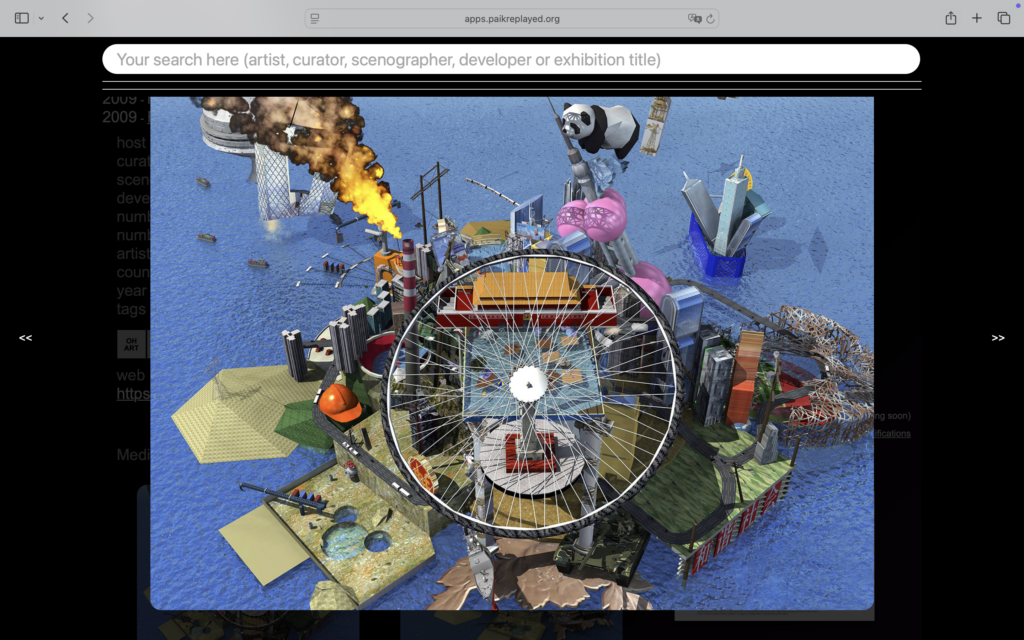
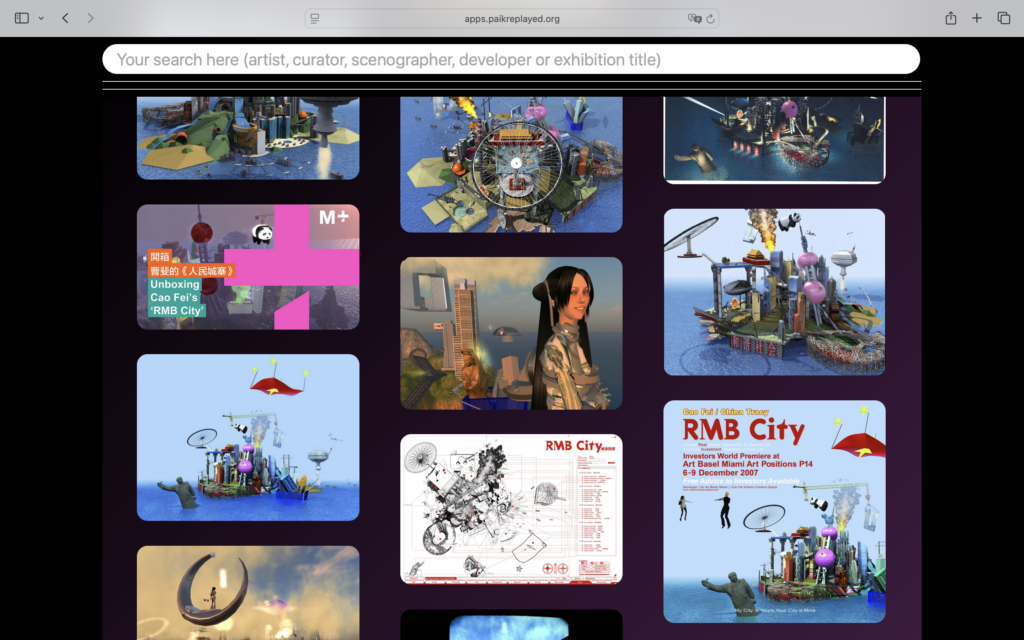
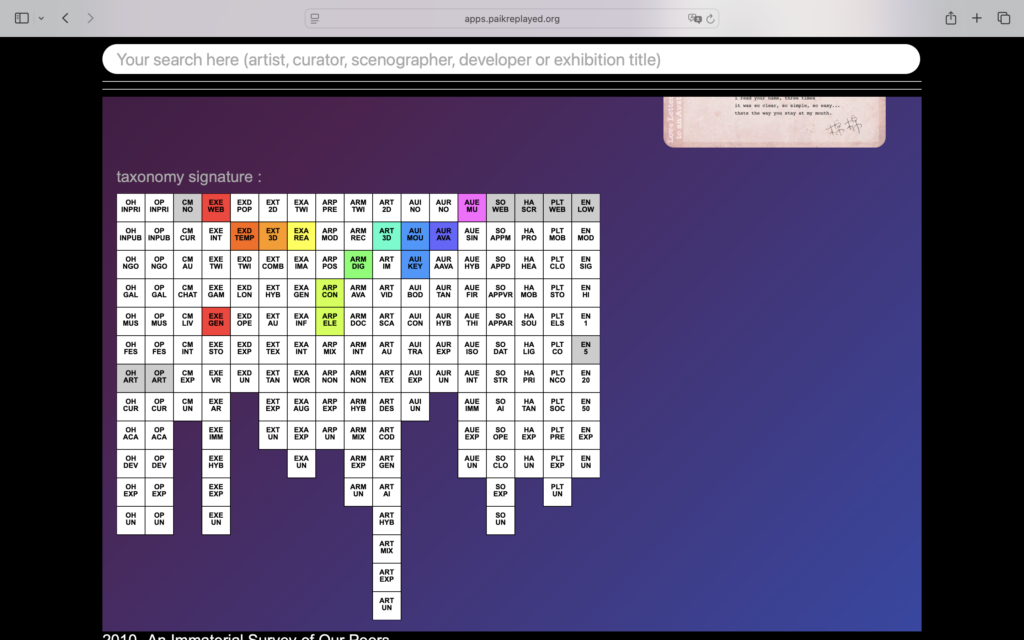
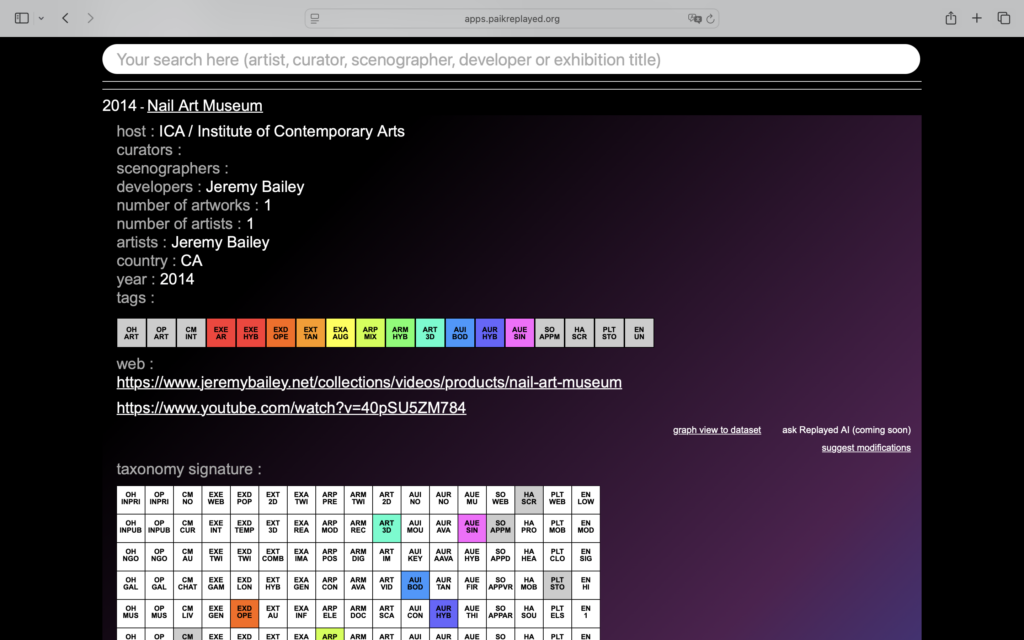
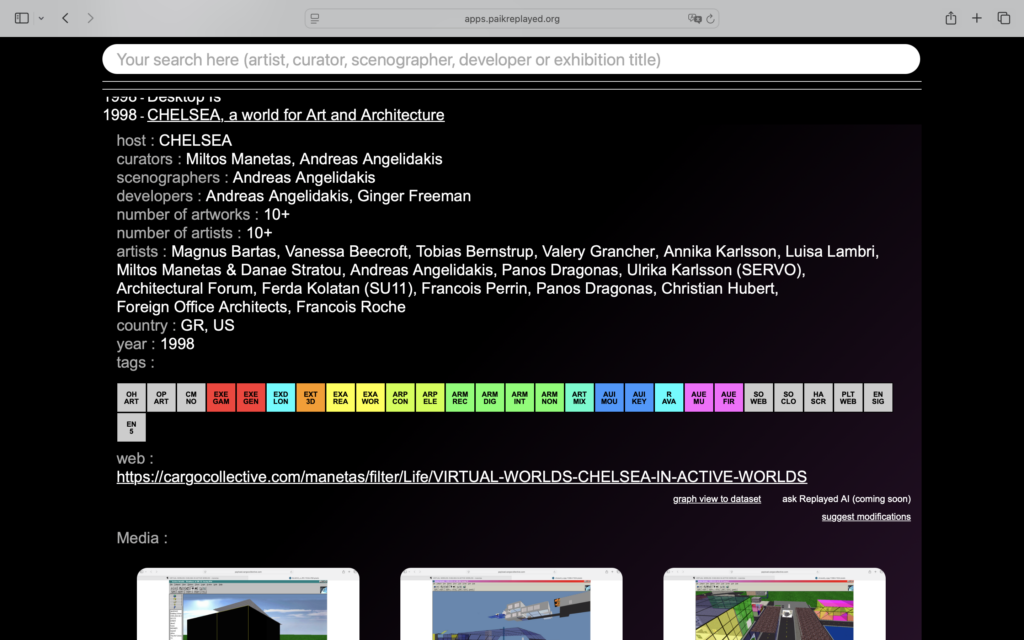
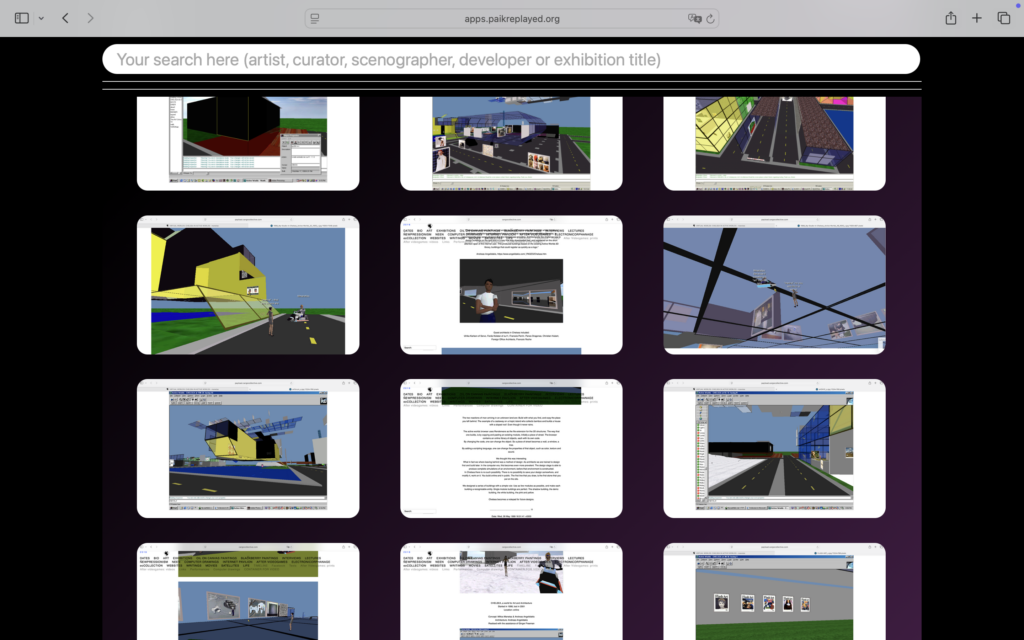
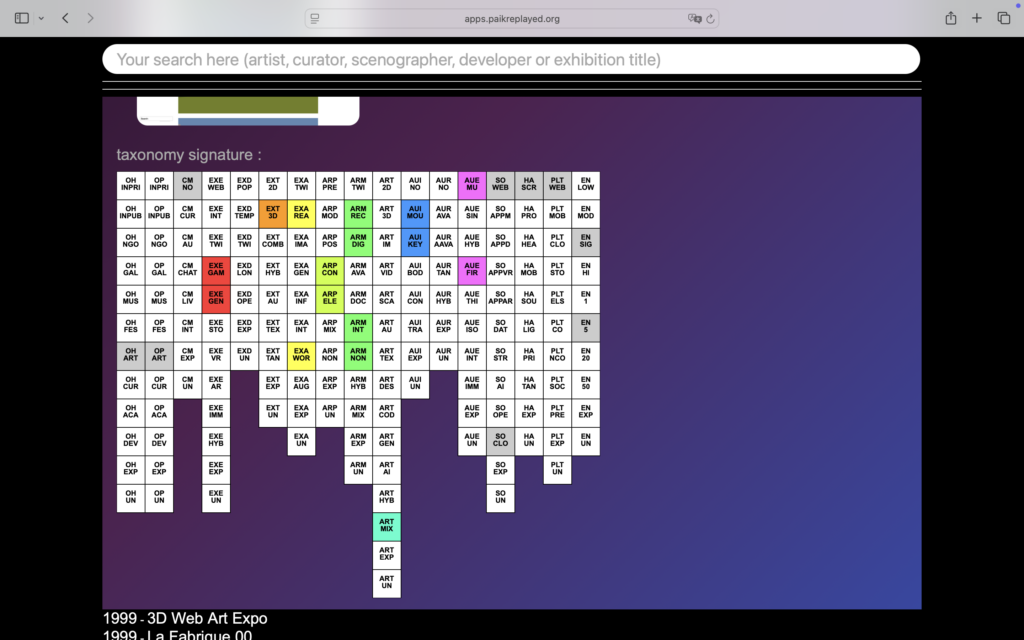
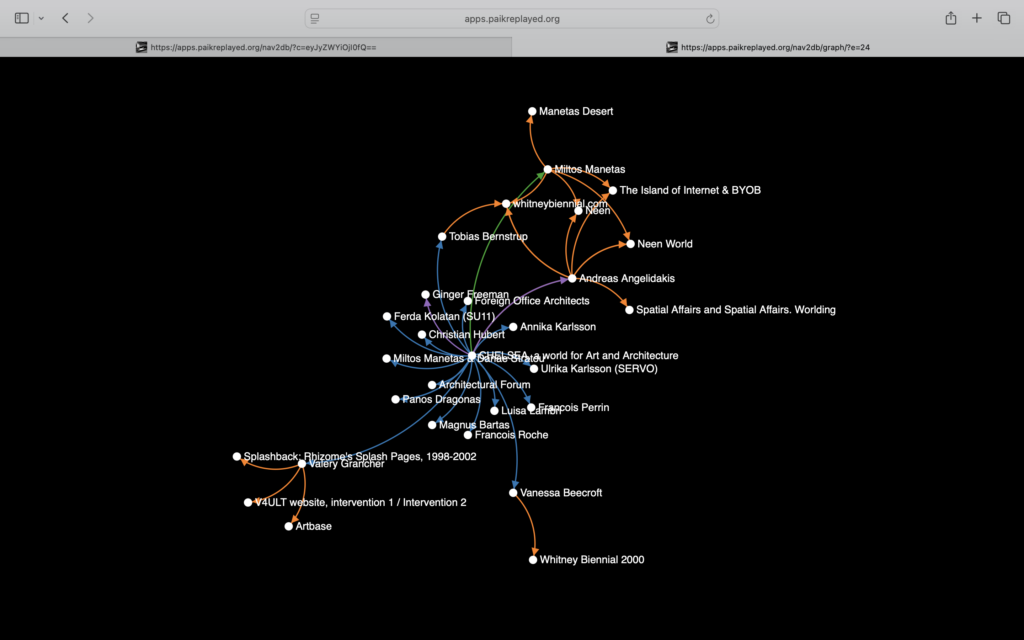
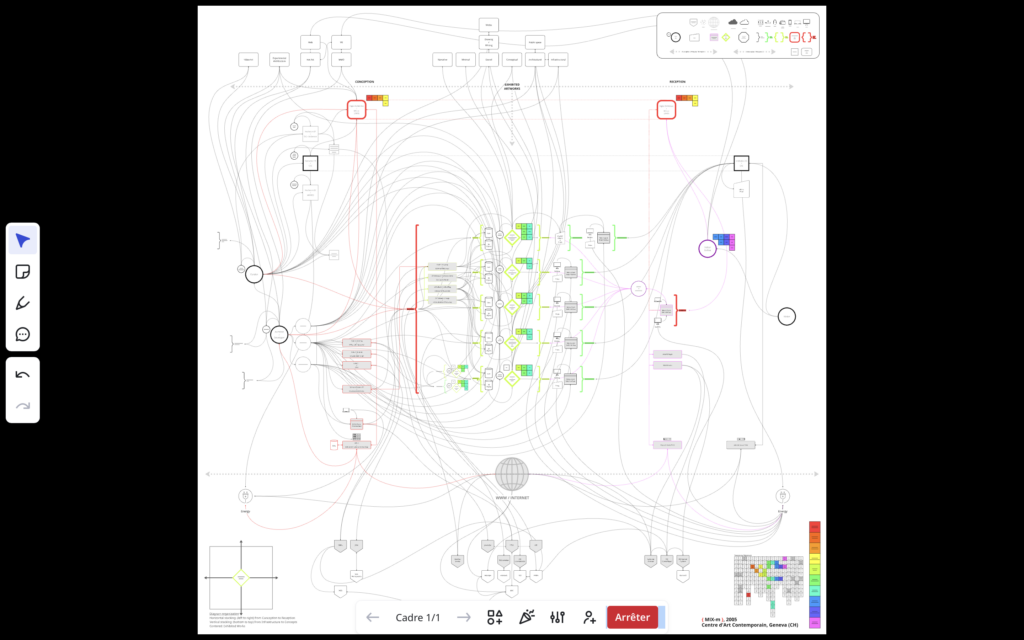
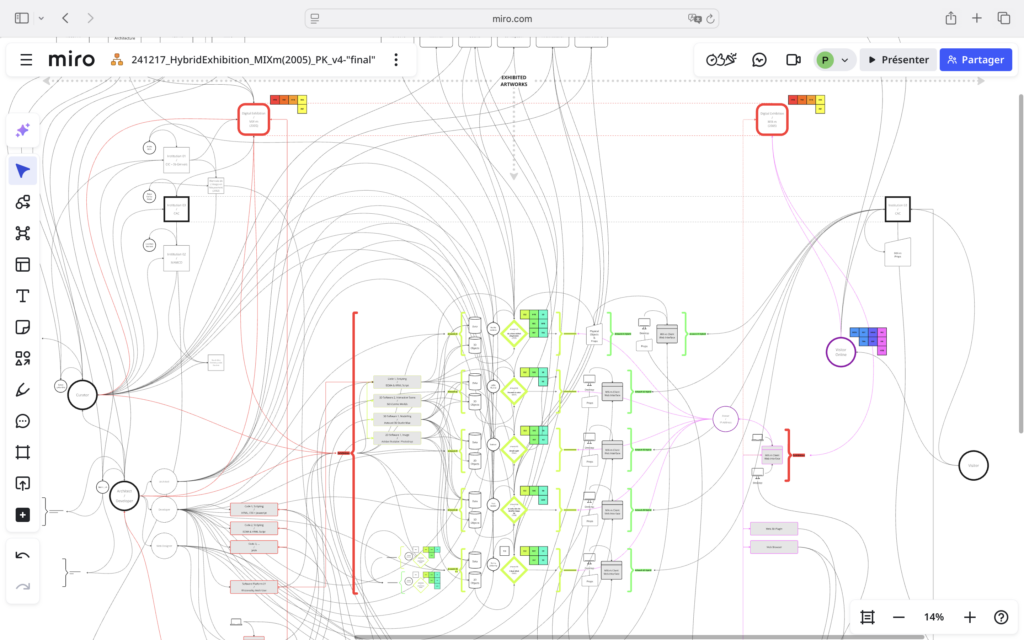
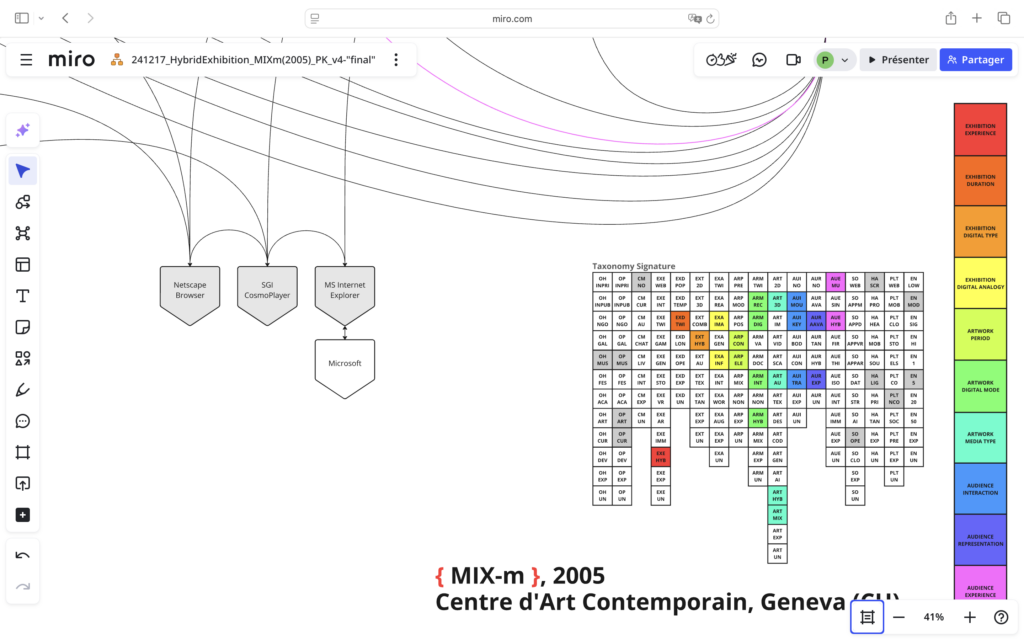
Over the course of several rich and exploratory conversations, the team reviewed ongoing materials from WP1 and began aligning its findings with new research directions. Discussions touched on metadata frameworks, curatorial logic, scenographic organization, and various modes of digital exhibition-making—from photogrammetry, gaussian splatting and virtual modeling to interactive environments. One guiding question throughout was how different technologies and strategies might shape not only the presentation of works, but also the visitor’s encounter with them.
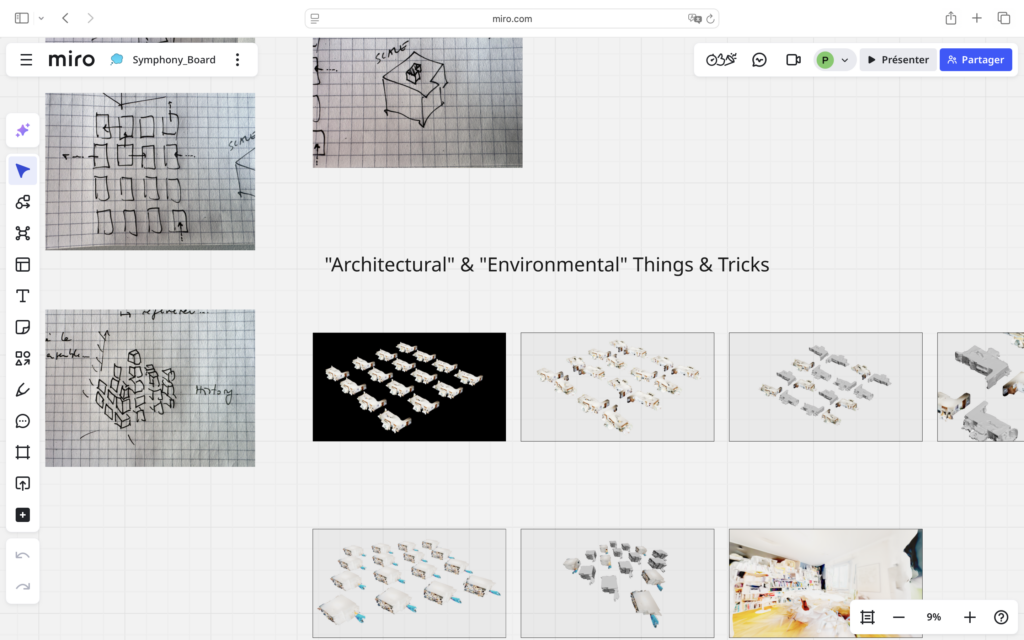
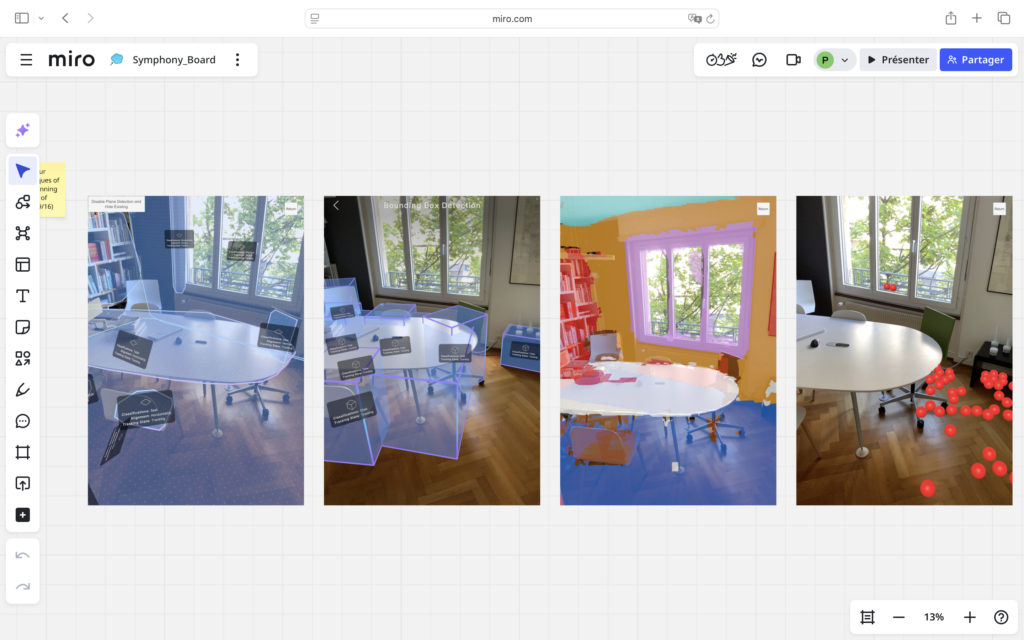
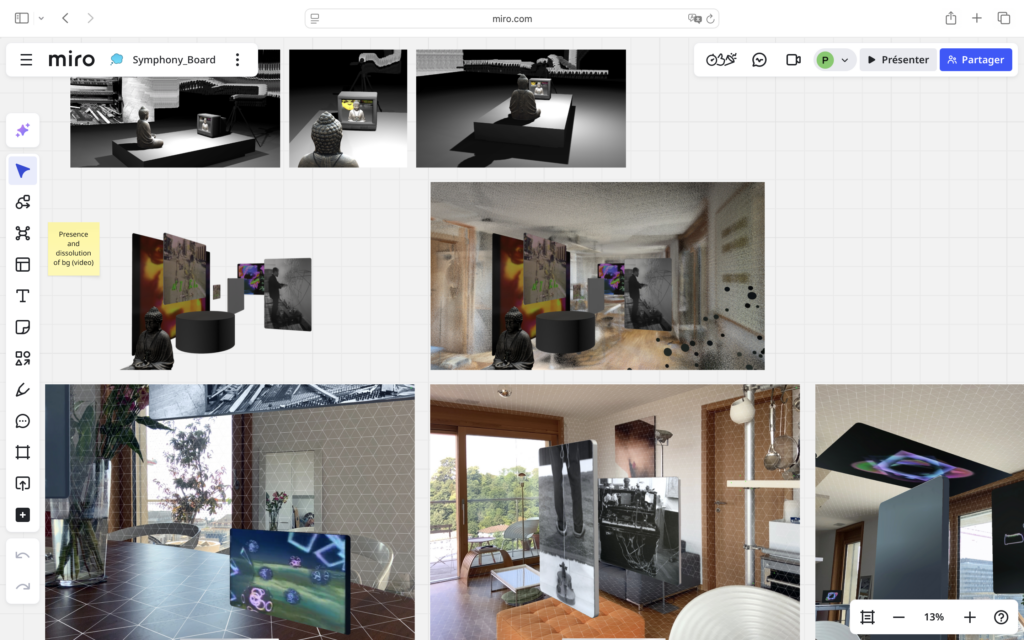
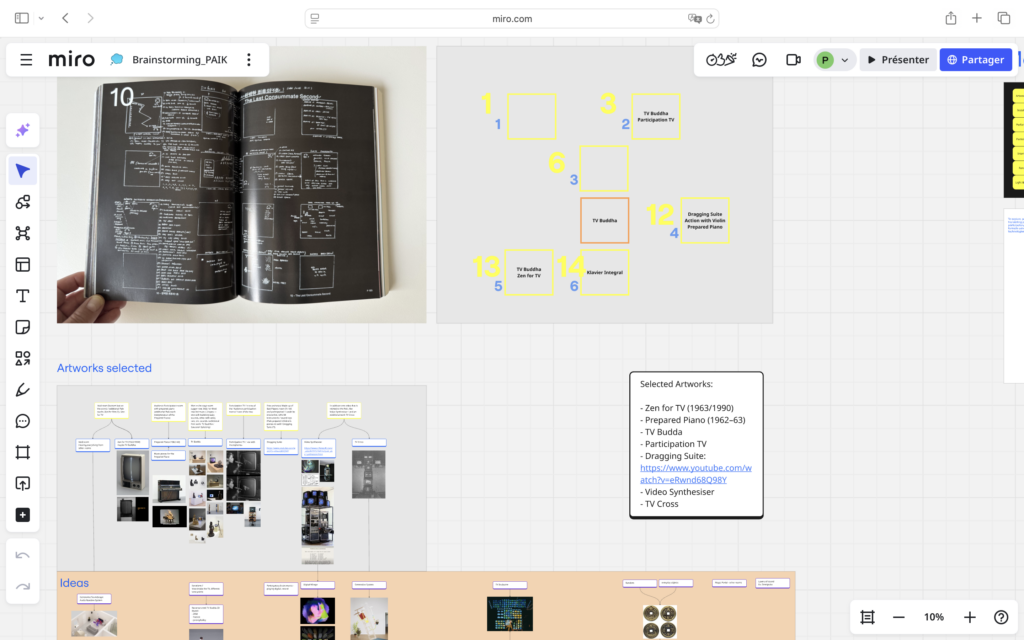
Our conversations also returned to Symphony for 20 Rooms (N.J. Paik, 1961), a conceptual score Paik developed as a multisensory, modular exhibition. Its open-ended structure continues to serve as a conceptual touchstone, prompting new inquiries into modularity, spatial logic, and viewer participation. This thinking is helping to shape both the methodological and technical criteria we’ll use moving forward.
As part of the broader mapping work from WP1, we also had the opportunity to speak with artist Jeremy Bailey about his Nail Art Museum, gaining valuable insight into browser-based exhibition practices and their implications for navigation, authorship, and access.
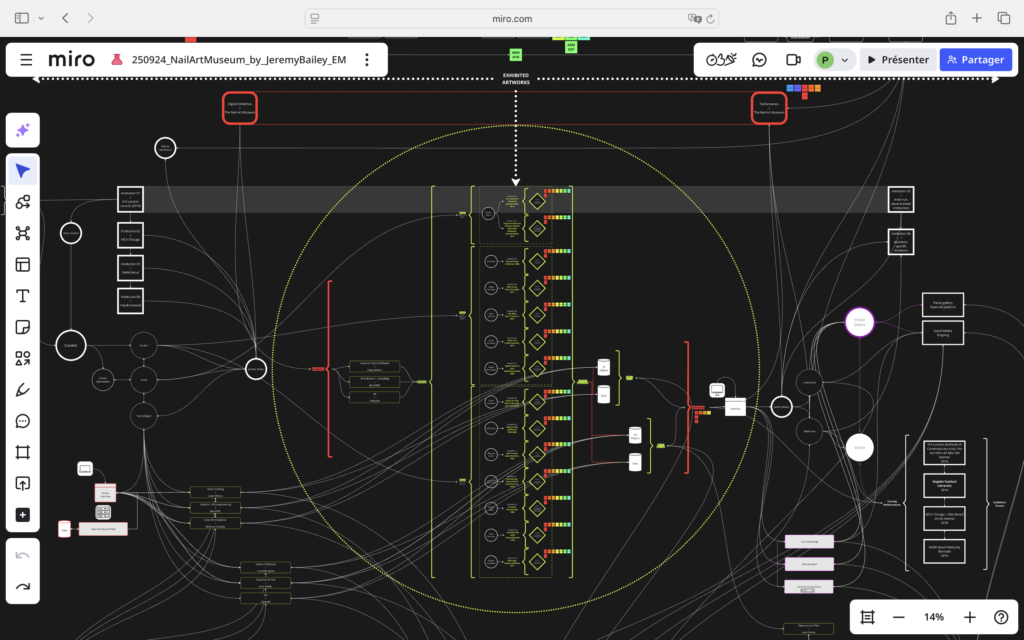
These conversations marked a significant step into WP2. They now guide the selection of case studies and prototypes as we move deeper into this next phase over the coming months.